07 Sep / Favorite Diverse Children’s Books of 2016 [in Utah Journal of Literacy]

ABSTRACT
These books feature diverse characters who – in a multiplicity of ways – suffer, learn, and generally triumph in their differences. Varying in genre from picture book to poetry, in setting from Kenya to California, and in ethnic focus from Muslim Bangladeshi to Ojibway/Anishinaaabe (Canadian Native American), the books highlight struggles of 8- through 18-year-olds as they deal with family, social, and personal identity issues.
So this looming elephant keeps appearing: MAGA, as in Make America Great Again. Regardless of political affiliations, books can most definitely open our minds and hearts toward greatness. In our nation of migrants (whether immigrants, slaves, refugees, sojourners, travelers, because we all came from somewhere else, even the First Nations/Native Americans who scholars believe walked across the Bering Strait), the right books can provide ideal antidotes against xenophobia, prejudice, intolerance, hate, and every negative, hurtful, limiting -ism out there. Yes, indeed – diverse books that reflect our ever-growing multiculturality will surely make America great again. To enhance your bookshelves – and continue to open minds – be sure to check out these notable, resonating, fabulously colorful 2016 reads.
PICTURE BOOKS
 Colata Laínez, René. (2016). Mamá the Alien | Mamá la extraterrestre. Illustrated by Laura Lacámara. New York, NY: Lee & Low Books.
Colata Laínez, René. (2016). Mamá the Alien | Mamá la extraterrestre. Illustrated by Laura Lacámara. New York, NY: Lee & Low Books.
When Sofia’s bouncing ball knocks over her mother’s purse, what spills out is more than just the usual keys and wallet; Sofia finds proof that her mother is a registered ALIEN, “¡una extraterrestre!” She’s even more surprised when her mother confirms that the card is “real,” that her “dream was to get this card” when she first arrived in the United States. When she asks her father if he has such a card, he explains, “‘No, I don’t have a card like Mamá’s because I was born here.” Sofia can’t help but worry if she’s an alien too. Beyond the comical misunderstandings, Sofia learns just how aliens from anywhere can become proud Americans. René Colata Laínez’s own immigration experience, added as an author’s note at book’s end, as well as the book’s bilingual presentation, make this alien an even more timely, welcome, necessary story.
 Deedy, Carmen Agra with Wilson, Kimeli Naiyomah. (2009; 2016 first trade paperback edition). 14 Cows for America. Illustrated by Thomas Gonzalez. Atlanta, GA: Peachtree.
Deedy, Carmen Agra with Wilson, Kimeli Naiyomah. (2009; 2016 first trade paperback edition). 14 Cows for America. Illustrated by Thomas Gonzalez. Atlanta, GA: Peachtree.
A young Maasai man returns to his village in Kenya after being away for a long time with “one story [that] has burned a hole in his heart.” He remembers the “buildings so tall they can touch the sky”; he saw the “fires so hot they can melt iron”; he witnessed the “smoke and dust so thick they can block out the sun.” He was there in New York City on September 11, 2001. The men, women, and children of his village are silenced in disbelief, until an elder asks, “‘What can we do for these poor people?”
For the Maasai, once a nation of feared warriors, “the cow is life” as they are now peaceful, nomadic cattle herders. Kimeli is the first to offer his most valued possession, a cow. Others follow until 14 cows are offered to the people of America to commemorate the 9/11 tragedy: “Because there is no nation so powerful it cannot be wounded, nor a people so small they cannot offer mighty comfort.” The real-life Kimeli’s note at book’s end provides further testimony of the efficacy of compassion towards lasting peace.
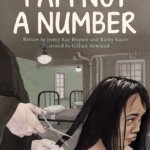 Dupuis, Jenny Kay and Kathy Kacer. (2016). I Am Not a Number. Illustrated by Gillian Newland. Toronto, ON: Second Story Press.
Dupuis, Jenny Kay and Kathy Kacer. (2016). I Am Not a Number. Illustrated by Gillian Newland. Toronto, ON: Second Story Press.
From our northern neighbors comes the story of Irene Couchie Dupuis, co-author Dr. Jenny Kay Dupuis’s grandmother who, when 8 years old, was forcibly removed from her home by the Canadian government and sent to a residential school with her two brothers. The strict nuns had a single goal – to erase the indigenous Native American/First Nations heritage in the young children, even their very names. Irene was reduced to “759” for the duration of the isolated, abusive school year when she was subjected to more brutal labor than actual learning. When the summer break finally allows her to escape back to her home, her parents must find the defiant courage to keep their children safe. Lest readers think this is a story that happened far away, the U.S. shares the same shameful history of government-mandated residential schools for Native Americans. Dupuis, of Ojibway/Anishinaaabe ancestry, shares her family legacy with honesty and pride – and reminds us all “there is still much work to be done.”
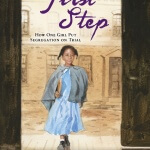 Goodman, Susan E. (2016). The First Step: How One Girl Put Segregation on Trial. Illustrated by E. B. Lewis. New York, NY: Bloomsbury USA.
Goodman, Susan E. (2016). The First Step: How One Girl Put Segregation on Trial. Illustrated by E. B. Lewis. New York, NY: Bloomsbury USA.
More than a full century before Brown v. Board of Education (1954), Little Rock Nine (1957), Ruby Bridges (1960), and the Civil Rights Movement, four-year-old Sarah Roberts entered the Otis School in Boston to begin her education in 1847. When she was denied access to the white school, her parents decided to fight back. Sarah’s 1849 case made history, but it didn’t change laws – until six years later, in 1855, when Boston became the first major U.S. city to integrate its schools. The rest of the country took another 99 years to follow Boston’s example. Award-winning nonfiction children’s author Susan E. Goodman tells Sarah’s powerful story with simple, inspiring intensity: By pulling Sarah’s 19th-century history forward over the next hundred-plus years, the author connects Sarah with 21st-century readers who continue the ongoing struggles for equality.
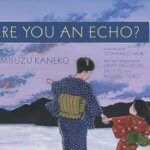 Jacobson, David. (2016). Are You an Echo? The Lost Poetry of Misuzu Kaneko. Illustrated by Toshikado Hajiri. Translated by Sally Ito and Michiko Tsuboi. Seattle, WA: Chin Music Press.
Jacobson, David. (2016). Are You an Echo? The Lost Poetry of Misuzu Kaneko. Illustrated by Toshikado Hajiri. Translated by Sally Ito and Michiko Tsuboi. Seattle, WA: Chin Music Press.
Amidst the apocalyptic aftermath of Japan’s March 2011 earthquake, a single poem managed to reach millions, reminding survivors of “the power to respond,” and inspiring almost a million volunteers to rush to the devastated Tōhoku region to help. That poem, which was broadcast as one of numerous public service announcements, was “Are You an Echo?” by Misuzu Kaneko, who had passed away over eight decades earlier. Born in 1903, Misuzu lived a short, difficult life, but her poetry was full of “a deep kindness toward all things whether they are alive or inanimate.” Today Misuzu’s poems “are part of every child’s curriculum at Japanese elementary schools,” and her work is available internationally in 11 languages. For the first time, Stateside audiences get to experience Misuzu’s playful images, her thoughtful questions, and her empathetic concerns, written with such clarity and simplicity they are easily accessible to the youngest audiences.
 O’Leary, Sara. (2016). A Family Is a Family Is a Family. Illustrated by Qin Leng. Toronto, ON: Groundwood Books.
O’Leary, Sara. (2016). A Family Is a Family Is a Family. Illustrated by Qin Leng. Toronto, ON: Groundwood Books.
Talking about families can sometimes be daunting for children, especially when they can’t check off those expected so-called “traditional” boxes representing who’s who of their bestest loved ones. Sitting in her classroom discussing “what we thought made our family special,” one little girl is not quite sure what she’ll share. “My family is not like everybody else’s,” she thinks to herself. As she learns from her fellow students, no family is truly like anyone else’s – and that’s something to celebrate. As Sara O’Leary configures her many delightfully diverse familial units, artist Qin Leng – with her signature style so overflowing with whimsy and charm – imbues each member with individual identity and unique personality, all brought together with enveloping warmth and unbreakable bonds. The message is powerfully simple: No one gets to define a family but the members themselves.
 Shraya, Vivek. (2016). The Boy & the Bindi. Illustrated by Rajini Perara. Vancouver, BC: Arsenal Pulp Press.
Shraya, Vivek. (2016). The Boy & the Bindi. Illustrated by Rajini Perara. Vancouver, BC: Arsenal Pulp Press.
A young boy, curious about his “Ammi’s dot . . . a bright and pretty spot,” innocently asks, “Why do you wear that dot?/What’s so special about that spot?” His mother explains, “It’s not a dot. . . . It’s not a spot, it’s a bindi!” When the boy receives his own bindi, he connects with generations past and is inspired to embark on a journey of empowered discovery. Indian Canadian musician/filmmaker/writer Vivek Shraya (God Loves Hair) makes her picture book debut with gentle rhymes and warm whimsy, amplified by Toronto artist Rajni Perara’s richly hued illustrations. This multicultural, intergenerational story of young agency imparts an important lesson on both inclusivity and individuality.
MIDDLE READERS
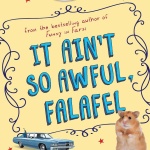 Dumas, Firoozeh. (2016). It Ain’t So Awful, Falafel. New York, NY: Clarion Books.
Dumas, Firoozeh. (2016). It Ain’t So Awful, Falafel. New York, NY: Clarion Books.
Zomorod Yousefzadeh’s itinerant upbringing has already encompassed long distances – not just in miles, but across cultural, social, and political divides. Originally from Iran, her family is finally settling into a California condo. That summer of 1978, Zomorod renames herself Cindy, after Brady Bunch-Cindy, and begins her American metamorphosis, discovering taco nights, Girl Scouts, Halloween, sleepaway camp, and more. And then her home country is in revolution: The Shah is ousted, Ayatollah Khomeini takes brutal control, and Americans are held hostage for 444 days. Being Iranian in the U.S. becomes a matter of survival. Through Cindy’s feisty, observant voice, memoirist Firoozeh Dumas (Funny in Farsi) distills a difficult chapter from recent history into an accessible coming-of-age novel infused with resonating issues that continue to affect today’s youth, from bullying to isolation, racism, activism, multi-generational challenges, and the need to assert independence.
 Jung, Mike. (2016). Unidentified Suburban Object. New York, NY: Scholastic/Arthur A. Levine.
Jung, Mike. (2016). Unidentified Suburban Object. New York, NY: Scholastic/Arthur A. Levine.
Primrose Heights is home to only three Asian Americans: 12-year-old Chloe Cho and her parents. Despite Chloe’s growing interest in her Korean heritage, her astrophysicist mother and fish-store-owner father remain consistently mum about the family’s past, always hedging with excuses like “Talking about Korea … it’s complicated, and painful.” When a class project requiring a parent interview goes awry, Chloe’s parents are finally forced to divulge the truth, causing Chloe’s head to “pop like a supercheap balloon.” Struggling with this surreal revelation, Chloe aims her whip-smart sarcasm at the casual racism all around. Here’s how a straight-A, first-chair violinist becomes a formidable unidentified suburban object to contend with! Seamlessly blending realism with out-of-this-world fantasy, Mike Jung (Geeks, Girls, and Secret Identities) also manages to infuse thought-provoking statements about identity, race, and living life as the only and “other” – or, as Chloe proudly insists, “waving my freak flag solo.” Go, Chloe, go!
 Kelly, Erin Entrada. (2016). The Land of Forgotten Girls. New York, NY: HarperCollins/Greenwillow Books.
Kelly, Erin Entrada. (2016). The Land of Forgotten Girls. New York, NY: HarperCollins/Greenwillow Books.
Once upon a time, Soledad had two sisters and two loving parents. But tragedy can happen to anyone at any time, and suddenly Sol and her younger sister are transplanted from the Philippines to a run-down apartment in Louisiana. Too soon, they’re abandoned by their desperate father and left in the (so-called) care of an abusive stepmother. Buoyed by courage, new friends, and a fairy faux-grandmother on her side, Sol just might figure out how to navigate this strange new world. Award-winning Erin Entrada Kelly’s latest is a nuanced, delight-inducing story about living between two cultures, surviving loss, and finding family in the least expected places.
 Reynolds, Jason. (2016). Ghost. New York, NY: Atheneum/Caitlyn Dlouhy Books.
Reynolds, Jason. (2016). Ghost. New York, NY: Atheneum/Caitlyn Dlouhy Books.
Seventh grader Castle “Ghost” Crenshaw runs fast with good reason: His father – armed with a loaded gun – forced Ghost and his mother to run for their lives. Three years later, Ghost’s mother works hard to keep him safe, while Ghost tries never to ask for more than she can give. His temper, however, too often keeps him fleeing from trouble of his own making. When the track coach recognizes his immense talent, Ghost’s cocky arrogance initially gets in his way. How Ghost finds his tremendous stride proves to be a realistic, exhilarating story. (Look for a wink-wink to Reynolds’s friend and fellow author Christopher Myers, son of the legendary Walter Dean Myers, one of Reynolds’s inspirations.) A 2016 National Book Award finalist, Ghost, the first of Reynolds’s four-part “Track” series, makes an ideal choice for even the most reluctant readers.
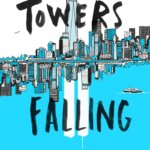 Rhodes, Jewell Parker. (2016). Towers Falling. New York, NY: Little, Brown.
Rhodes, Jewell Parker. (2016). Towers Falling. New York, NY: Little, Brown.
The Avalon Family Residence might sound nice, but it’s not: “peeling paint, cockroaches . . . our tiny room.” Dèja, her parents, and her two younger siblings are homeless, currently staying in a Brooklyn shelter. Her father can’t work, and her exhausted mother is menially employed. As Dèja starts fifth grade in a new school, she shields herself from being judged with misdirected bluster and anger, but she’s surprised to find a welcoming teacher and two wonderful friends. A series of class assignments about home, social circles, and relationships eventually lead Dèja to discover the tragic events of 9/11 for the very first time – including how the event has been directly affecting her own family ever since. As immediate as 9/11 still feels for many, a whole new generation has come of age in the ensuing 15 years. For those readers, Rhodes melds recent history with a timeless narrative celebrating family and friends that both teaches and inspires.
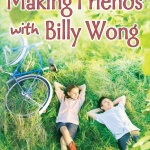 Scattergood, Augusta. (2016). Making Friends with Billy Wong. New York, NY: Scholastic.
Scattergood, Augusta. (2016). Making Friends with Billy Wong. New York, NY: Scholastic.
When 11-year-old Azalea and her mother arrive in Paris Junction, Arkansas, her mother barely lasts a few minutes in her gossipy small-town childhood home. In the summer of 1952, Azalea is left behind to help her injured grandmother with her housework and gardening. When Grandma Clark suggests she befriend Billy Wong, the Chinese American great-nephew of the local storeowner, Azalea responds with shock: “Back home, I don’t know any foreigners.” Her grandmother corrects her sternly. “Billy’s not a foreigner.” He’s just new to Paris Junction, having moved from nearby Mississippi because, Grandma explains, “He wasn’t allowed to go to the better school, simply because he’s Chinese.” Billy, a wannabe journalist, turns out to be an ideal companion. Between gardening, adventurous bike rides, and even a midnight act of vandalism, the summer provides pivotal lessons on compassion, race, poverty, genuine friendship, and the unbreakable bonds of family. Scattergood’s (Glory Be) third novel earnestly and effectively combines crucial, little-known civil rights history with absorbing storytelling.
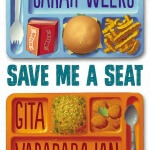 Weeks, Sarah and Gita Varadarajan. (2016). Save Me a Seat. New York, NY: Scholastic.
Weeks, Sarah and Gita Varadarajan. (2016). Save Me a Seat. New York, NY: Scholastic.
Award-winning Sarah Weeks (So B. It) and India-born debut author Gita Varadarajan present a poignant, comical cultural exchange in the alternating voices of two fifth-grade boys. Joe Sylvester has been living in the same New Jersey town, going to the same school, and hanging out with the same two buddies most of his life. Until he isn’t. Over the summer, his only friends moved away, which means Joe is starting the new school year alone. Enter Ravi Suryanarayanan, for whom absolutely nothing is the same. He’s recently arrived from India, where he was a star student and athlete. Here, his new teacher misunderstands his fluent English just because he’s lacking a New Jersey accent. Over a single school week, Joe and Ravi overcome many false starts to discover they just might become the best of buddies. Rollicking humor aside, Save Me a Seat is an affecting, compassionate reminder to look beyond assumptions and discover true friendship.
YOUNG ADULT
 Budhos, Marina. (2016). Watched. New York, NY: Penguin Random House/Wendy Lamb Books.
Budhos, Marina. (2016). Watched. New York, NY: Penguin Random House/Wendy Lamb Books.
As a Muslim Bangladeshi American high school senior, Naeem should be looking forward to graduation, college, and growing independence. Although he’s smart and capable, he’s also easily distracted and willing to hazard his shopowner parents’ ire and disappointment hanging out with risky friends. When an outing goes awry and leads to Naeem’s arrest for a crime he didn’t commit, he’s given two options: face the probability of prison or agree to work with the NYPD spying on his neighbors and friends within his predominantly immigrant Queens community. Marina Budhos, who previously illuminated post-9/11 stereotypes and threats facing South Asian American youths in Tell Us We’re Home (2010) and Ask Me No Questions (2006), offers an unsettling, riveting thriller that provides no easy answers as to the good guys and the bad, who’s right and who’s not.
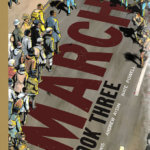 Lewis, John and Andrew Aydin. (2016). March: Book Three. Illustrated by Nate Powell. Marietta, GA: Top Shelf Productions.
Lewis, John and Andrew Aydin. (2016). March: Book Three. Illustrated by Nate Powell. Marietta, GA: Top Shelf Productions.
Unless you haven’t read a single word this year, this three-part graphic history will probably be quite familiar: March: Book Three – the trilogy’s final installment – deservedly won the 2016 National Book Award for Young People’s Literature. The chronicles of Congressman John Lewis’s pivotal involvement with the Civil Rights Movement concludes here, deftly dovetailed with the inauguration ceremony of the first African American President of the United States. Essential and more timely than ever, March should be at the top of every reading list in the new year and beyond.
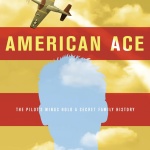 Nelson, Marilyn. (2016). American Ace. New York, NY: Penguin Random House/Dial.
Nelson, Marilyn. (2016). American Ace. New York, NY: Penguin Random House/Dial.
When Connor’s grandmother dies, she leaves his father a ring, a pair of pilot’s wings, and a letter explaining that the man who raised Connor’s father was actually not his birthparent. With his father paralyzed by depression, Connor takes the two mementoes and the few details available to him and traces his new lineage to the U.S. Air Force, Wilberforce University, and an international DNA map that reveals European, African, and Jewish roots. In award-winning Marilyn Nelson’s revealing afterword, aptly titled “How This Book Came To Be, and Why an Older African American Woman Ended Up Writing as a Young White Man,” she uses history – personal, national, worldwide – to affirm the surprising human interconnections in our very cells and souls.
 Pérez, Ashley Hope. (2016). Out of Darkness. Minneapolis, MN: Lerner/Carolrhoda Lab.
Pérez, Ashley Hope. (2016). Out of Darkness. Minneapolis, MN: Lerner/Carolrhoda Lab.
The 1937 school explosion in New London, Texas remains the deadliest school disaster in U.S. history. With that real-life tragedy as starting point, Ashley Hope Pérez adds greater volatility to race, class, and family dysfunction by introducing a love story between two teens from different worlds in a tiny community where nothing remains hidden for long. Mexican American Naomi, 15, arrives from San Antonio with her younger twin half-siblings to live with the twins’ white father, a born-again Christian too fond of the bottle. She’s ostracized at her segregated school, even as boys objectify her and girls punish her for her outstanding beauty. The twins are first to make friends with Wash, an African American high school senior whose easy, caring manner Naomi can’t ignore. As love grows, danger draws closer, with the most immediate threats at home. Pérez’s latest – the recipient of a 2016 Printz Honor – is wide-eyed testimony to the undeniable best and unrelenting worst of humanity.
 Russo, Meredith. (2016). If I Was Your Girl. New York, NY: Flatiron Books.
Russo, Meredith. (2016). If I Was Your Girl. New York, NY: Flatiron Books.
In Lambertville, Tennessee, new girl Amanda Hardy immediately turns heads. She’s barely figured out her class schedule before she’s telling a boy interested in her phone number how “really strict” her father is, and elaborating with the time-worn “It’s complicated.” The would-be suitor, Grant, has no idea just how complicated: Amanda – born Andrew – finally has a chance to be the girl she knows she was meant to be. She’s survived relentless bullying, senseless violence, and a suicide attempt to finally, bravely transition to be her true self. Amanda and Grant’s story could be just like any other high school romance – except it isn’t. The challenges facing transgender youth – to their mental health, family bonds and friendships, their very safety – translates to a greater struggle to reach adulthood. Debut novelist Meredith Russo knows – she’s a transgender woman herself. Her narrative is fresh and unique because it’s the story of a transgender teen, but proves universally engaging as a coming-of-age novel of self-discovery and acceptance. On the slowly expanding bookshelves of transgender young adult titles, Russo’s affecting novel is poised to join previous pioneers including Julie Anne Peters’s Luna and Ellen Wittlinger’s Parrotfish.
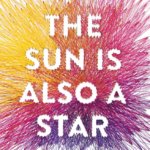 Yoon, Nicola. (2016). The Sun Is Also a Star. New York, NY: Penguin Random House/Delacorte.
Yoon, Nicola. (2016). The Sun Is Also a Star. New York, NY: Penguin Random House/Delacorte.
Can 12 hours last a lifetime? Two teens are about to find out. Natasha is a half day from being deported with her family back to Jamaica, a country she barely remembers, because she’s lived the last 10 years as a New Yorker. Having just heard the worst news, she’s understandably distracted when she’s pulled away from the path of a swerving car on a Manhattan street by Daniel, a Korean American high school senior who happens to be on the same corner because of a scheduled college interview that’s supposed to determine the rest of his highly successful life. The younger son of immigrant Harlem storeowners, Daniel’s predetermined future as an Ivy League-degreed MD is not at all what he wants. With virtually nothing in common, not to mention the inevitable countdown, Natasha and Daniel are on a collision course toward – well – true love. Nicola Yoon follows her bestselling multi-culti debut Everything, Everything (now available on celluloid) with another major hit, proving once again that diverse characters facing diverse situations make good business as well as great reading.
